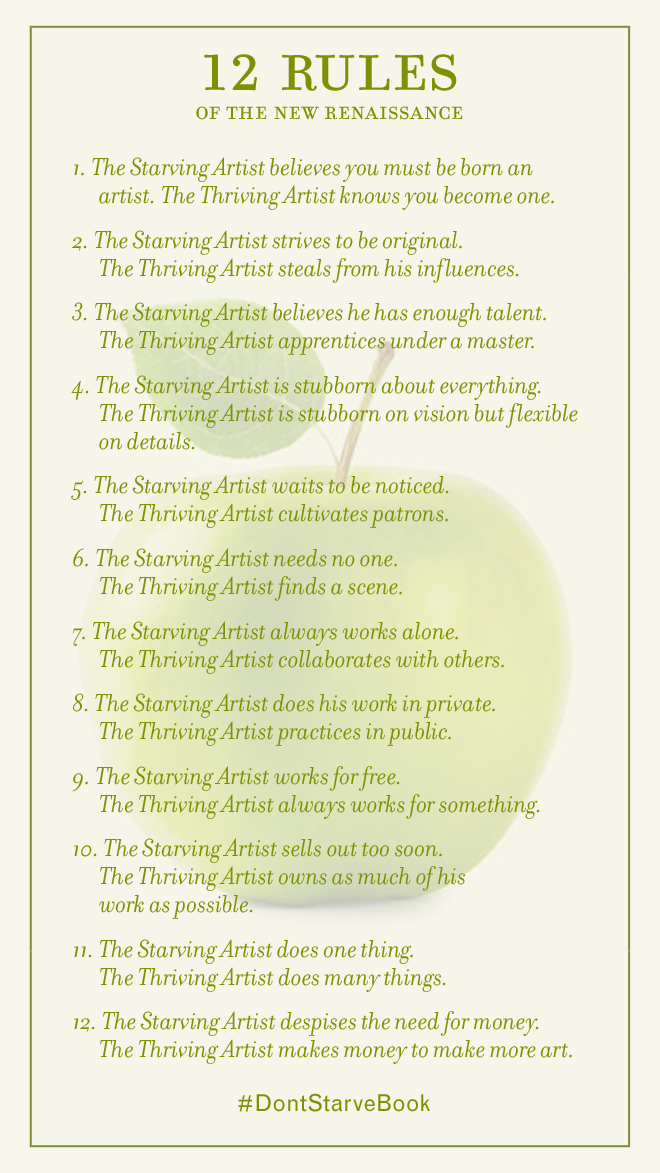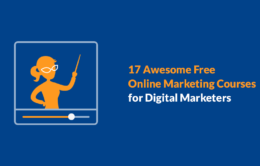I’ve written before about the myth of the starving artist and why creative workers need to get paid their due. But often the next question they ask is, but how? How do you actually make money as an artist? Hint: it may not be the way you think.

The way you make money as an artist is not necessarily going to be from your most important work. Important work and popular work are not always the same. Often, a person’s most significant creative expression was not what made them famous or even paid the bills. Nonetheless, it was work that needed to be made.
“
Important work and popular work are not always the same.
There are two ways to look at this. First, we could look at the cynical way: the world doesn’t care about important, only popular work. And certainly, you could make a case for this perspective.
However, the second way to look at this—the way that I look at this—is that some work is naturally going to be more commercial than others. That doesn’t make it bad or superficial. It just is.
The challenge, though, is to not camp out here and keep producing popular work. Sometimes you need to make something important, something daring, something people just might not understand at first. And yet, it still needs to be made. That’s the important work.
So, my philosophy is this: do both. Create popular work, and use that commercially successful work to pay the bills. But don’t stop there. Keep creating and go deep in your craft so that you can also produce the important work that world needs but may not want.
In other words, be the Batman of your industry: the artist we need but don’t deserve.
“
Be the Batman of your industry: the artist we need, but don’t deserve.
Let the popular work fund the important work. And the way that you do that is through multiple income streams.
Not only do I want to share my thoughts with you in this post, but I also recorded a special episode of The Portfolio Life to expand on these valuable lessons. You can listen below or read the article.
Before we talk about income streams, let’s explore another concept briefly: why are you creating this work in the first place?
What’s it for?
My friend Mark Almand (who has given me many great ideas including “experiment-chase-program”) has a great framework for deciding what the priority is in any given project. He calls it Reach-Revenue-Legacy. Here’s how it works:
- Reach: Some things you do to help your brand grow. You may spend time, money or other resources to make this happen, but eventually as your reach grows, it will come back to you in the form of revenue. Most people call this “marketing”. Some projects help you reach more people, and money should be taken off the table as an expectation—at least in the short term.
- Revenue: Some things are about bringing in money. There’s nothing wrong with this. If you run a business or are self-employed, this is a necessity. You’ve got to keep the lights on. So, on occasion, you may do something just to get some cash so that you can keep doing your work.
- Legacy: Some things are about the long-term—how you want to be remembered or the dent you want to make in the universe. These efforts and projects may or may not generate revenue. They may even cost you money. But they are so important to you and your mission that you can’t avoid doing them. These are big-deal projects that you will be grateful you did when you’re on your death bed.
That’s the framework: reach, revenue, legacy. Most projects you do will fit into one—but probably not all three—of those buckets. Before you set out to do something—launch a book, build a website, host a conference—you need to know why you’re doing it and which bucket your project fits in.
If reach is the goal, the questions become:
- Who do you want to reach, and how far will you go to reach these people?
- How much money will you spend?
- How much time?
- How will you know when you’ve reached enough people?
- What do you want them to do, once you reach them?
If revenue is the goal, the questions become:
- How much money do I want to make off this and for what?
- What’s the income goal, and what do you intend to do with it?
The answers can be as simple as, “I want to make $10,000 so I can pay that down payment on my house.” Or it can be more involved, like, “I want to make $1 million so that we can give $250,000 to that school project in Africa.” Or so you can reinvest in your business, hire more people, etc. Whatever. You just need to have a number in your mind and a reason for that number.
If legacy is the goal, the questions become:
- What kind of impact do I want this to leave?
- Why do you think this is so important that it’s worth remembering?
- To what lengths will you go to make sure you or this project leaves a legacy?
Whether your goal is reach, revenue, or legacy, starting a blog can help you reach an audience with your work. Join me for a free webinar and learn how to launch a successful blog and build an audience for your art.
3 revenue streams for every artist
Okay, so now that we’ve covered the reach-revenue-legacy framework, that should help you decide when a project needs to make money and when it doesn’t. Because of course, not all your work will pay the same.
Some of your most important work may not end up being your most successful. That’s okay. You still need to create it.
At the same time, you can’t go broke. Not if you want to keep creating for the rest of your life. And you don’t have to sell out to make an income off your art. You do, however, have to diversify.
In Real Artists Don’t Starve, one of the “rules” of the Thriving Artist was “Diversify your portfolio.” You need to create more than one thing. A body of work. A portfolio life. That’s how you’ll be able to do this kind of work for a lifetime.
Here are three income streams you’ll want to include in that portfolio. Of course, there are more ways to monetize your art, but these three categories are a pretty good start. Almost every Thriving Artist I see uses them at one point or another.
1. Teach your art
The old saying “if you can’t do, then teach” is not true. Some of history’s best practitioners of their art were teachers. And what better way to make some money off your art than to teach what you know?
Many, many artists have done this at one point or another to support themselves, including David Foster Wallace. Of course, you don’t have to do this.
The pro to this approach is it gives you more time with your craft, because even when you’re teaching it, you’re learning about it. The con is that you may feel like a fake, teaching something, if you’re not actually doing it yourself.
2. Sell your art
There are two ways to do this.
First, you can sell your art—your books, your paintings, your music—directly to the market. Or you can sell your art to a handful of patrons.
The Beatles are a prime example of the first category. So is Taylor Swift or any very successful commercial artist. The challenge to this approach is you have to sell a lot of widgets to a lot of people for a long period of time to make a career out of this.
An example of the latter category would be any successful Renaissance artist, like Michelangelo, who used the resources of a handful of wealthy patrons throughout his career to fund his work and make ten times the average rate of his peers.
There is, however, a third way to do this today that doesn’t require you to sell millions of records or books, nor does it require you to know a bunch of wealthy people. You can build a tribe—a small but significant audience of anywhere from 100-10,000 people who are all in on your art. They want what you have, and you can spend a lifetime creating just for them.
3. License your art
The third way to profit from your art is to let others use it while you retain the intellectual property, publishing rights, and copyrights associated with your work.
In other words, you maintain ownership of the work but license your art—your words, your images, your music—to others who pay a fee to use it every year. The advantage to this is you typically don’t need a huge audience to make a living doing this, so long as you license your work to the right individuals or organizations.
For example, cartoonist and author Hugh McLeod has had a very successful career as an artist licensing his artwork to major companies who use it in employee training materials. The music of Ryan O’Neal (AKA Sleeping at Last) is another example of employing the licensing model to make a great living as a an artist.
All that to say, the point of this is to not just make a buck. It’s to make something important, something that lasts. And in order to do that, we have to reach the right people, make enough money, and leave a legacy.
As I am fond of saying, we don’t make art to make money. We make money to make more art. Good luck.
You can learn more about developing multiple income streams for your work when you pre-order the paperback version of Real Artists Don’t Starve. In addition, you can pick up some extra bonusesavailable for a limited time:
- Artist edition of the RADS workbook
- Writer edition of the RADS workbook
- 7-week book study Facebook group
- Exclusive discount on Real Artists Don’t Starve Course ($70 off)
Get your copy of the book and claim you free bonuses here.
Do you have multiple income streams for your art? Let me know how in the comments.

from Goins, Writer https://ift.tt/2KJS0z9
via
seo7








